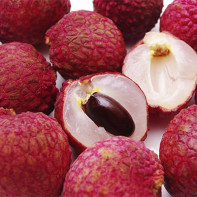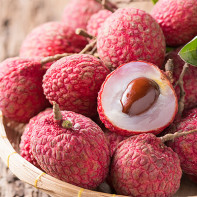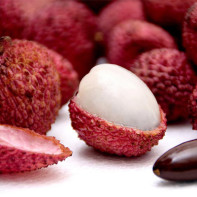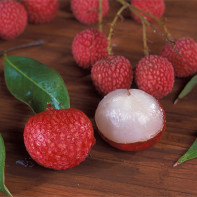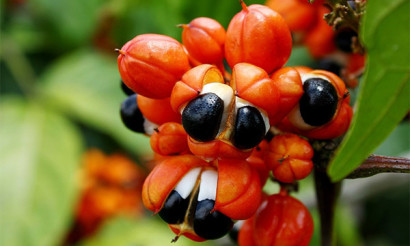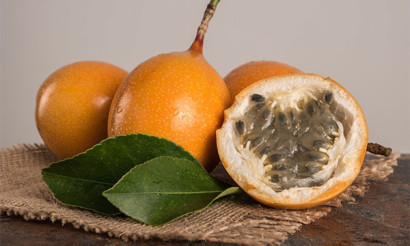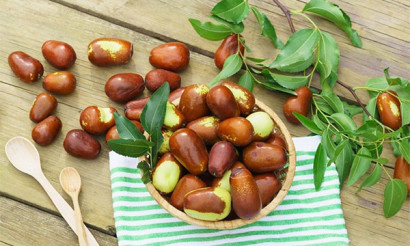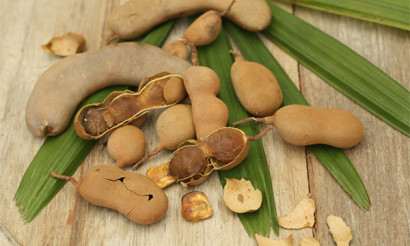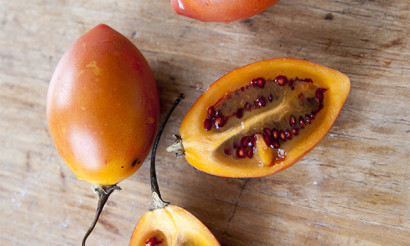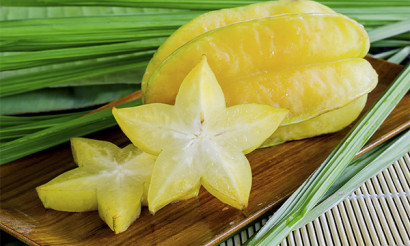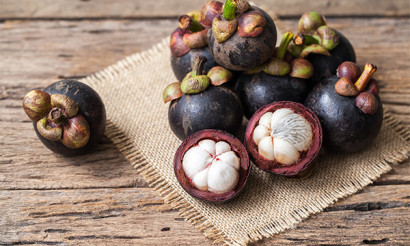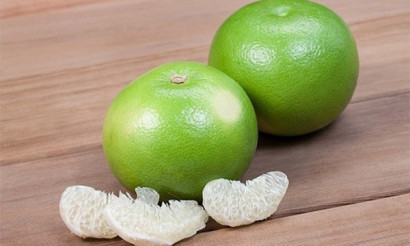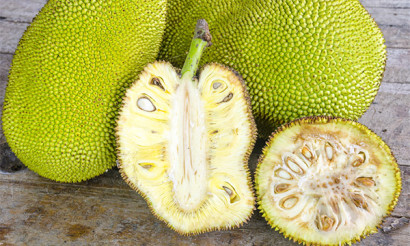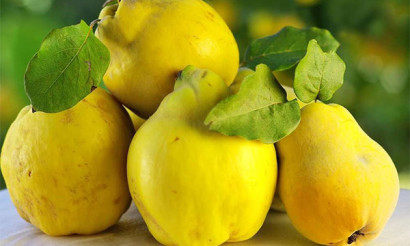Lychee fruit: what is it, useful properties and contraindications
The first mention of the exotic fruit dates back to the II century BC. The period refers to the reign of the great Chinese emperor Wu Di. At that time, the territory of China was already divided into northern and southern.
- What is a lychee
- Varieties of
- What it looks like
- Where it grows
- How lychee differs from rambutan and longan
- Composition and calories
- Lychee properties
- General benefits
- For Women
- For men
- For Pregnancy
- For breastfeeding
- For children
- For weight loss
- What is the Litchi Seed Good for?
- Benefit and harm of lychee seeds
- Lychee Oil: properties and application
- The Use of Canned Lychee
- Lychee in Medicine
- Diabetes
- For pancreatitis
- For Gastritis
- For Liver
- Lychee in cosmetology
- Face Mask Against Pigmentation
- Hair growth-promoting mask
- Harm and Contraindications
- How to choose and store
- Can it be frozen?
- How to Eat Lychee Properly
- How to Brush It
- How much you can eat per day
- Can I Eat the Flesh
- What can be made with lychee fruit: Recipes
- Exotic Salad
- Fruit chicken
- Cold Soup "Tropic"
- Salad "Love Fruit".
- Jelly "Tenderness"
- Salad "Imperial".
- Famous Paris-Brest cakes
- Lemonade "Chinese Empress".
- Can animals be given lychee fruit
- Interesting facts about lychee
According to one legend, the ruler attempted to get the crop from the south and begin to actively cultivate on the opposite side of the domain. But due to the lack of sufficient moisture, heat, and the low fertility of the land, the plant could not be cultivated. The emperor became furious and gave orders to kill all the gardeners at court.
What is a lychee?
Lychees are small, sour-sweet berries covered with a dense peel. The fruit tree belongs to the Sapindus family. The fruit can also be called lishi, lishi, lizhi, liji, or Chinese plum.

Varieties
It was said by Professor Groff in his work "Lichi and Lungan" that the cultivation of the Chinese plum, belonging to the highest variety, is not only a matter of pride for the family, but also an object of rivalry among the local people, who treat the berry with special reverence.
At the end of the fifteenth century, the Fujian annals promulgated a list including 40 subspecies of laixi, which were named exclusively after the surnames of the inhabitants.
Groff, having studied the records of his predecessors, came to the conclusion that his catalog would include not only the mountain and water types of the plant, but also species that differed in the color of the pulp and bone. In all, the professor identified 16 varieties. Among the most common are:
- No Mai Tsze - otherwise called sticky rice.
- Kwa Iuk, characterized by its green tip and typical lettuce stripes.
- Kuei Wei - with the characteristic smell of cinnamon, sweet and fragrant flesh.
- Hsiang li - with small, coarse, prickly fruits.
- Hei yeh - with sharp curled leaves, the best variety of "water" berries.
- Ta tsao - literally translated as "weighty crop", the egg-shaped fruit is common in Canton.
- Fei tsu hsiao - with its amber fruit and unpredictable pit size - can be either huge or small.
What it looks like
The Chinese plum grows on evergreen trees with spreading crowns. Under natural conditions it reaches a height of 10 to 30 meters. Its leaves are compound, pinnate in shape and grow from 5 to 9 lanceolate or oblong-ovate elements with islet-like apexes. Their underside is gray, while the outer surface is dark green with a glossy coating.
Flowers gather in numerous lush umbrellas up to 0.7 m long. The inflorescences consist of greenish or yellowish calyxes without petals. Normally 10-15 ovaries develop from the flowers, and all the superfluous ones fall off.
Fruits of lacey are 25 to 40 mm in size and weigh no more than 40 g. The small berries have a red or brownish rind, which is covered throughout with small, slightly sharp spines. Lychee pulp is jelly-like, white or yellowish in color, with a subtle wine or grape-strawberry flavor. There is a dark brown oval-shaped pit in the middle. In their natural environment the ligeon matures in late May or early June.
Where to grow
Historically, lizhi is native to a low altitude area between the two southern Chinese provinces of Quangtung and Fujian. The river and sea climate creates an acceptable climate for the growth of lychee.
The exotic fruit has a long and distinguished history. The first attempts at cultivation were made as early as the 2nd century B.C. At the beginning of the 17th century, the litchi fruit began to be cultivated in Burma and a century later in India. Chinese plum reached the Caribbean islands only by the mid 70's of the XVIII century.
Lacey spread in English and French greenhouses in the early 19th century, and from there it was moved to the East Indies by European gardeners. The plant appeared in Hawaii around 1870, and in Florida and California after 1895.
At the beginning of the 20th century, annual berry harvests in the provinces of China exceeded 13 million kilograms. In 1938, Fukin harvested a record number of fruits - about 16.5 million kg. Chinese provinces are in the lead in terms of laysi production, but India is firmly in second place in terms of the total number of crops. Their area is about 13 thousand hectares.
There are also large-scale plantations in Pakistan, Bangladesh, Burma, Japan, the Philippines, Madagascar and Brazil. Lychee is cultivated commercially in vegetable gardens located in the northern regions of Queensland and South Wales. In total, the number of trees planted on American territories exceeds 4.5 thousand.
In Hawaii, many plants are located in backyards, and private plantations are quite few. Liji are found in local outlets, and a small percentage are exported.
How lychee differs from rambutan and longan
If you walk into a modern supermarket, you can find many tropical fruits. Exotic fruits include lychee, longan and rambutan. But customers have quite a reasonable question - what is the difference between the overseas viands? In terms of taste, they are almost indistinguishable. But in fact every fruit is different from the rest, and not only in appearance.
Roughly speaking, all fruits are brothers, since they share the same motherland: tropical Asia. They grow in India, China, Thailand and neighboring countries. The trio belongs to the family Sapindidae, they are similar with white juicy flesh and only one seed inside.
Rambutan is a fruit characterized by its soft, hairy rind. The flesh, reminiscent of a sweet melon, has a sweet-sour, creamy flavor and a distinct floral aroma. The fruit of the Chinese plum has a knobby and thinner rind compared to the rambutan.
Longanus has a slightly tart and rich flavor. Depending on its maturity, it is sour or distinctly sweet. The flesh of the longan is hidden under a brown skin with a yellow or red tint. The skin of tropical fruits is rough to the touch, but has no hairs or bulges.
Both lisy and longan grow on spreading trees, but the lisy has a denser crown. The lisy fruit varies in diameter by 25-30, while the liji is larger. Both fruits are characterized by a white, slightly watery filling. The longan's flesh is all clearer, while the litchi's is softer. But both have only one seed, and both fruits can be eaten immediately after being plucked from their sprawling branches.
Longan has practically the same beneficial properties for human health as the Chinese plum, because it has been used in conservative medicine for several centuries:
- in the treatment of vascular and cardiac walls, ocular fundus;
- for frequent stress shocks;
- To improve the composition of the blood;
- to enhance immune function.
Longan contains a small amount of fat and has a low nutritional value, so it is perfect for those who dream about reducing the lipid layer in the body. Its pulp also serves as:
- An antidepressant - it promotes natural relaxation of the nervous system and reduces fatigue and irritability.
- Antioxidant - fights and removes free radicals, protecting the heart muscle from the progression of chronic diseases and other organs from cancerous tumors.
- Stimulant of blood flow and increases the absorption of iron, preventing the development of anemia.
- A cure for neurasthenic neurosis and insomnia.
- An energy booster.
Longan and lychee have antioxidant properties and are allowed even to diabetics in moderate quantities with timely control of sugar levels.
Rambutan, unlike lychee, is covered with a red thick skin with small hairs resembling bristles. The filling of the congener tastes like a juicy, sweet melon. Inside, like the lychee, there is a small brown pit. Rambutan skin is quite difficult to separate from the compacted pulp, so first make incisions with a knife, and then only remove the dense shell.
The exotic fruit resembles a lychee only on the outside. The historical homeland of the rambutan is believed to be Malaysia and Indonesia. The trees, on which the fruit grows, reach 6 m.
The fruit contains a large number of useful elements and microelements necessary for humans. In terms of nutritional value, rambutan beats the Chinese plum.
When you include the tropical fruit in your diet:
- There is rejuvenation of the skin and strengthening of the human skeleton;
- headaches are reduced;
- kidneys are cleared of excess salts;
- Moisturizes the skin;
- Dyspnea and runny nose symptoms disappear.
The fruit also revealed more dietary fiber, the content is determined by the ratio of 3 grams per 100 grams of pulp, the same indicator in lychee is equal to 1.
Malaysian lychee is a source of ascorbic acid and iron. The same 100 g contains about 40% of vitamin C of the total norm for an adult.
If we compare lychee and rambutan, we can safely say that they differ slightly from each other: the appearance and the degree of density of the contents are slightly different.
Composition and calories
The Chinese plum is deservedly considered a vitamin storehouse. And in Asian countries the fruit is included in the top ten rankings on the level of useful properties. Berry pulp has a low nutritional value per 100 grams - 60 units. Lychee is an irreplaceable component of dietary meals.
The usefulness of lychee is easily explained not only by the complex combination of vitamin and elemental complex, but also by the ratio of:
- water - 77 to 84 ml;
- carbohydrates (sugars) - 14-15 grams;
- proteins - 0.82 g
- fats - 0,30 g
- fiber - 1.48 g.
- Caloric value - 66.
The proportion is based on 100 grams of pulp. Fruits contain many vitamins that directly affect some functions of the body:
- B1 and B2 - affect metabolism in cells.
- C - strengthens bones, nails, hair and helps with viral infections, bronchial asthma and tuberculosis.
- E is a strong antioxidant and helps eliminate toxins and wastes.
- K - has a positive effect on the rate of blood clotting.
- Ascorbic acid - 200 grams of lychee completely covers the daily requirement of the body in it.
Micronutrients in the composition of the Chinese plum can include compounds:
- Potassium - strengthen the walls of blood vessels and the heart.
- Phosphorus - necessary for carbohydrate breakdown, assimilation of useful sugars and metabolic processes.
- Calcium - help strengthen bones, nails, teeth, nerves, immune system.
- Iron - normalize the overall metabolism.
- Sodium - improve the function of the urinary and digestive systems, prevent dehydration.
- Zinc - removes heavy metals, increases the life span of cells and reduces stress, beneficial effects on skin and hair.
- Selenium - has an antitumor effect and protects against thyroid disease.
- Manganese - necessary for proper brain function, regulate blood sugar levels.
- Copper - improves the endocrine system and the intestines, support the production of the amino acid tyrosine.
- Nicotinic acid - protect against atherosclerosis and dementia, ensure normal function of the pancreas and thyroid gland.
Thanks to the carbohydrates lychee has a sweet pleasant taste. Their amount depends on the variety, on average in 100 grams of product contains 14 g. Health properties of Chinese plums provided by a combination of copper, potassium, vitamin C and nicotinic acid.
Useful properties of lychee
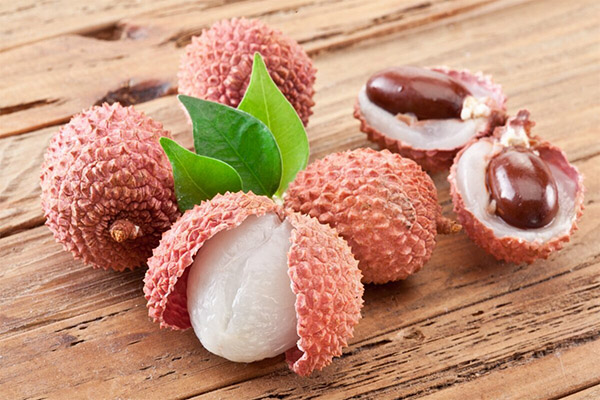
General benefits
Even the ancient Chinese noted that lichi berries benefit the whole body. Followers of traditional healing methods are convinced that the fruit is able to help:
- for disorders of the urinary system;
- atherosclerosis;
- high cholesterol levels;
- first clinical manifestations of senile sclerosis;
- asthmatic attacks;
- tuberculosis;
- bronchitis;
- diabetes mellitus;
- frequent emotional breakdowns;
- recurrent depression;
- neurosis;
- fatigue;
- anemia and a tendency to anemia;
- low immunity;
- increased physical exertion.
Chinese plum contains a large number of microelements, so the pulp in moderate amounts is useful at any age and position. On the basis of litchi extract, dietary supplements are made to eliminate the lion's share of free radicals.
Lychee contains organic compounds that are involved in maintaining acid-base and water-salt balance. In Chinese provinces, lisy along with lemongrass fruits are used during the treatment of cancer and other serious diseases in their early stages. Anticancer properties are ensured by the antioxidant oligonol.
For women
The usefulness of Chinese plum fruit for ladies is due to the presence of unsaturated fatty acids. Omega-3 and 6 are recommended for pronounced premenstrual syndromes and painful regurgitation.
The pectins in the pulp help neutralize toxins and heavy metal salts. In the process, water-insoluble compounds are formed that are excreted naturally. Therefore, the pectin component has a beneficial effect on intestinal peristalsis and the overall condition of the skin.
Choline compounds help you to better tolerate stressful situations, because they provide support for the brain and contribute to the instantaneous transmission of impulses coming from the nervous system.
A woman's body at any age needs folic acid, which stimulates the production of white blood cells, having an effect similar to that of immunomodulators.
The amino compounds lysine and tryptophan present in lysine slow down the aging process, improving the quality of hair, nails and skin.
Nicotinic acid is useful for atherosclerosis. Even the level of modern medicine can not cure the disease, but the flesh of the Chinese plum is quite able to prevent it or to stop it. The risk group includes ladies with the beginning of menopause.
For Men
The masculine half in China and India notes that lis is a powerful natural aphrodisiac. The berries are believed to enhance sexual desire, thereby significantly increasing male power. To achieve tangy and lasting results, it is recommended to eat 10-12 fruits daily.
If you are pregnant
Women who are pregnant need to introduce fox berries into the diet gradually, carefully observing the state. If there are no problems, then you can safely consume 8-10 berries per day, which do not prevent blood clotting and restore normal peristalsis, preventing constipation.
The sour taste will help to cope with the most typical manifestation of toxicity - nausea. The pulp has a mild diuretic effect, which is especially important for edema in the late second and early third trimester. But pregnant women need to be on the alert, sometimes activated metabolic processes provoke miscarriages.
When breastfeeding.
The fruit fruit will be useful during the lactation period. Lychees not only expand the nutritional outlook of the mother, but also replenish the body with a useful compound - nicotinic acid, which serves as a catalyst in the production of prolactin.
If there is a lack of breast milk, the berry pulp should be eaten by the mother 30-40 minutes before feeding. For one reception is enough 4-5 pieces. But in the first six months of the tropical delicacies should be abandoned, because the baby is not yet fully developed gastrointestinal tract and increases the likelihood of colic.
For children
Isisks can be eaten by babies in minimal quantities - no more than 110 g per day. And for children under two years of age, it is better not to introduce lisy into the diet at all. Chadam older is not recommended to exceed this amount, otherwise there may be inflammation in the mucous membranes of the mouth and start skin problems. Consumption of peeled fruit kids should be after the main meal. You need to watch your child so that he accidentally swallows the bone. Introduce a new product in the menu gradually, starting with one fruit.
For weight loss
Thanks to the high content of dietary fiber and low in calories, lychee is perfect for the diet table. The contents of the fruit significantly reduces appetite, speeds up metabolic processes and triggers the breakdown of fat tissue. Chinese plum extract has recently appeared on the market. The dietary supplement promotes the loss of unwanted kilograms.
What are the benefits of lychee peel
The shell of the tropical fruit is also used. It is boiled and taken for a week. The mixture consumed removes excess fluid from the body and promotes natural bursts of energy.
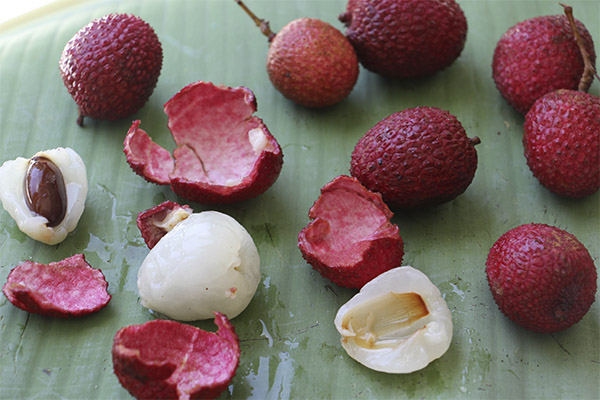
The peel is used after drying and grinding. On the basis of the powder are prepared solutions, effective for throat diseases: 1 tbsp. mixture is diluted in 250 ml of water and taken before meals a couple of times a day. It is also added to cosmetic lotions used to treat problematic skin on the face and back.
Grinded lychee shells serve as cancer prevention. Lychee powder is mixed with lemongrass and diluted with 1 tbsp. in a liter of pure water. Take before meals 3 times a day.
The benefits and harms of lychee seeds
The kernels contain poisonous substances that poison the body, so directly with the pulp of the litchi they are strongly not recommended to consume.
Toxic kernels are used in Chinese traditional medicine. Enterprising healers thoroughly dry the seeds, then grind them to a powdery state. The resulting mixture is prescribed for acute diarrhea or as prevention of helminths. But doctors carefully calculate the necessary dosage. Unauthorized use of kernels is not allowed.
Lychee oil: properties and application
The essential extract from the Chinese plum is used as an aid to prolong the beauty and youthfulness of the body. Lychee oil is a frequent component of many cosmetic care products. The composition gives the hair a natural shine and the desired smoothness, relieving statistical stress, saturates with micronutrients and restores their healthy structure.
The oil is also used as a fragrance in rooms, because it has a subtle, subtly pleasant scent, which gives freshness, strength and unleashes creativity.
In its pure form, fox oil extract is not applied to the skin, but a few drops are added to a body lotion. It is used with caution during pregnancy. The oil has a not very pleasant property - phototoxicity, so before a long stay in the sun is better to refuse to use. The composition is intended only for external consumption, it is forbidden to drink it.
Before applying it to the body, an allergy test should be performed. It is enough to drop a drop of oil, previously mixed with a teaspoon of vegetable oil, on the elbow bend or wrist. Check the reaction after half an hour.
The benefits of canned lychee
Sweet syrup litchi are often found on store shelves. The canned fruit has the same latter properties as the fresh ones. They are also able to replace the usual desserts and are suitable, because of the low caloric content, for people on a diet. Pickled Chinese plums differ only in a large amount of carbohydrates. Lychee in jars is not a scarce commodity and is available to the consumer all year round.
Lychee in medicine
Doctors advise the use of exotic fruit for most patients, and especially with the prerequisites and manifestations of anemia, diabetes, hypoglycemia, gastritis, gastric ulcer. The usefulness of the fox is also revealed in the treatment of diseases related to the respiratory system - the pulp helps to eliminate swelling, thinning and excretion of phlegm, reducing painful sensations.
The tropical fruit will also help with stool problems and overweight. The use of lychee pulp is prescribed in many diet diets because of its fiber content, which leads to a normalization of body weight.
For Diabetes Mellitus
Due to the antioxidants Chinese plum removes free radicals, which often cause irreversible oxidative processes. Diabetics need lychee to maintain immune function and normalize metabolism.
Important: The glycemic index of lychee is 57 units.
With pancreatitis.
Due to the presence in the composition of nicotinic acid, lychee significantly reduces the severity of the syndromes observed in inflammation of the pancreas. The compound prevents the release of large amounts of enzymes into the duodenum, which is important, because enzymes begin its destruction through self-digestion.
In gastritis.
Pectin reduces inflammation, coats the mucous membranes and restores the acid balance. The berry, when consumed regularly, brings all the components of the gastrointestinal tract, including the stomach.
For the liver
Due to the combination of micronutrients and vitamins, which normalize the level of free sugar and cholesterol, lychee prevents stagnation in the bile ducts of the right lobe of the organ. Therefore, the Chinese fruit does not allow hepatosis and tumor neoplasms to progress.
Lychee fruit in cosmetology
The Chinese plum is often used for cosmetic purposes as well. Thanks to its antioxidant properties, it slows down the aging process of the skin and improves the appearance of hair.

Face mask against pigmentation
Discoloration is disliked by everyone who is trying to achieve a perfect even skin tone. Juice with foxy will gradually cleanse the skin of everything unnecessary.
To prepare a therapeutic mixture, you will need the pulp of 3-4 berries, which should be mashed with a fork until a homogeneous consistency. Soak cotton pads in the puree and dot the face. Hold for 15-20 minutes and rinse with cold water. Remove unpleasant manifestations due to the content of ascorbic acid in lychee.
A mask that promotes hair growth
Frequent stress, unfavorable environment causes serious damage to the hair. The lychee fruit helps to stimulate hair growth. To make a remedy, you need to squeeze the juice of 8-9 fruits and mix with 2 tablespoons of aloe vera gel. The resulting composition is applied to the scalp with massaging movements. After an hour, wash with a mild sulfate-free shampoo. Hair begins to grow rapidly after the follicles will be fed regularly proper nutrition, which in masks based on the lysis provided by copper compounds.
Harms and contraindications
Do not forget that the Chinese plum is an unusual berry for our latitudes, so it is necessary to use it, especially for the first time, with caution and in small quantities. If you get carried away with the product, you can get gastrointestinal disorders.
It is recommended to limit the consumption or completely eliminate from the diet of the fruit for people suffering from gout. Certain types of lychee contain quite a lot of sugar and in too large quantities the fruit provokes the appearance of extra pounds. In rare cases, lychee fruit promotes hormonal imbalance - you should not abuse the berry. Its overabundance may provoke internal bleeding and fever.
Can you be allergic to the fruit?
If you eat a lot of lacey at the same time, an allergic reaction can occur. Also, the consumption of the fruit should be limited if a food intolerance is identified.
How to choose and store
When buying an exotic Chinese plum, it is necessary to learn about the signs of the berries, which must necessarily be:
- Dense, firm, without dents.
- With a shiny, whole skin, without cracks or tears, because overripe fruits quickly harden.
- With a dark pink or purple rind, a brown tint appears on stale specimens.
- With a pleasant aroma, lusciously sweet smell possesses spoiled lisy.
Unripe lice should not be purchased - they will not ripen. Tender, slightly watery, sour flesh is characteristic of a quality product. Gourmets note the similarity of licey taste to grapes while certain varieties have mint, pineapple and strawberry tones.
Lychee fruits are stored only in clusters; you don't need to remove the branches and stalks. Under standard conditions, the fruit will stay fresh for about 2-3 days, if placed in the refrigerator, it will last 7-10 days. If desired, Chinese plums can be frozen, dried or canned. The Chinese are confident that neither type of heat treatment will deprive the lychee of its useful properties.
Can I Freeze?
Before they are sent to the freezer, the fruits are washed and dried. It is not necessary to peel the berries - the procedure is at the discretion of the hostess. At low temperatures, the rind will turn brown, but the taste will not be affected. After all, the shell protects the juicy contents from loss of moisture. The taste of frozen lice resembles sorbet.
How to eat lychee properly
Many people do not guess how to properly consume lychee due to its unusual appearance. Yes, the fruit looks unusual for the inhabitants of the middle zone, but you can taste the juicy pulp after peeling the fruit. So how to do it?
How to peel lychee
It's quite simple: first the Chinese plum is washed under running water, then the thick skin is separated from the pulp by picking it up with a knife, and starting from the tails, it is peeled off just like the egg shells. For those who have strong teeth, it is enough to bite the fruit. The contents of the berry is divided into two parts in order to take out the pit.
From mature quality specimens the skin is separated without problems. It is strictly forbidden to eat lisy on an empty stomach. Lychee is eaten as a dessert or as a snack after lunch or dinner.
There are several ways to eat lisi:
- Fresh as a separate dish;
- as an original ingredient in salads, desserts, cocktails;
- as a base in fish or meat sauces or sweet syrup;
- in canned form.
You can also make an exotic Chinese drink, kongou. It is based on black tea leaves infused with liji skins. It can be served hot or cold with ice cubes.
How much can be eaten per day
The daily rate is 250-300 grams of peeled from the skin and bone white flesh for adults, and for children - 90-100 grams. When eaten frequently, the tropical product saturates the body with useful substances and strengthens many functions, including the immune system.
Is it possible to eat bones?
There is a common stereotype that it is good to eat lychee seeds in the same way as nut kernels. But this advice is wrong and can lead to unpleasant consequences in the gastrointestinal tract disorders and severe poisoning, leading to a deterioration of the general condition of the body and severe dehydration.
What to cook with lychee fruit: Recipes
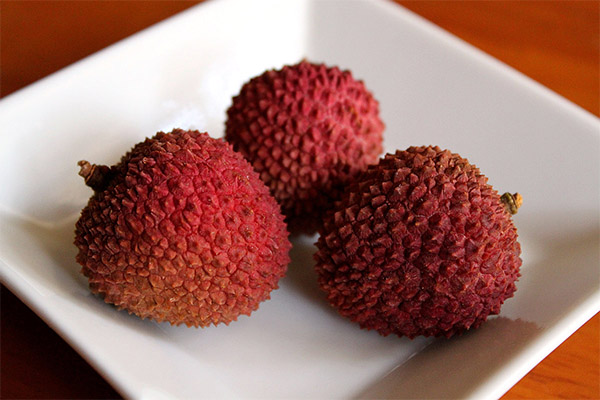
Salad "Exotic".
In addition to the unusual appearance, the dish is also notable for its usefulness. The low calorie content and many useful micronutrients make it possible to eat the salad even during a diet.
At the rate of two servings you will need:
- Chicken fillet - 400 g.
- Fresh or canned lychee - 300 gr.
- Shallots - 150 gr.
- Any greens - 1 bunch.
- Ginger root - 10 gr.
- Lime juice - 10 ml.
- Olive oil and spices - to taste.
Boil chicken meat in lightly salted water. Cool it and cut into small cubes. Peel the onion and chop finely julienne. Rinse the selected herbs under running water and coarsely chop them. Grate fresh ginger on the fine side of the grater. In a bowl, combine all the chopped components and add the litchi fruit, which we first rid of the hard skin. The resulting mixture dress the sauce of oil, salt, pepper, ginger and lime juice. Serve in portions.
Chicken
To prepare 4 servings you will need:
- Broccoli - 600 g.
- Rice - 250 gr.
- Chicken thighs - 4 pcs.
- Refined sugar - 3 tbsp.
- Apple cider vinegar - 250 ml.
- Hot pepper - 1 spice pod.
- Lychee - 15 pcs.
- Fresh pineapple - 1 pc.
- Spices - to taste.
Peel broccoli florets, wash and separate into sprigs. Cook on medium heat for 8-10 minutes in lightly salted water. In a separate saucepan cook rice for about a quarter of an hour.
Wash the chicken and remove excess moisture with a paper towel. Pour the sugar into the pan and bring it to a brown color. Add the chicken thighs and season with spices. Add a mixture of water and vinegar and stew for about 20 minutes.
Remove the pineapple from the skin and cut into small pieces. Take out the litchi from the shells, remove the seeds and purée. Remove the seeds from the peppercorns and chop them. Add all chopped fruits to the thighs 3-5 minutes before the end of cooking. Serve with rice and garnish with fresh pineapple.
Cold soup "Tropic".
The taste and tenderness of the dish will impress even the most capricious gourmet.
For two servings we take:
- Lychee - 40 g.
- Mango - 1,5 pc.
- Lime - 1 piece.
- Candied ginger petals - 40 gr.
- Olive oil - 2 tablespoons.
- Chives - 20 gr.
- Mint leaves - to taste.
Cut candied ginger petals into slices. Pre-cool the litchi and mango, peel and remove seeds. Put the pulp into a blender, add onion, oil and lime juice and grind until smooth. Serve in portions, pre-garnished with mint leaves and a sprinkling of sweet spices.
Salad "Love Fruits"
For 2 people you will need:
- Frozen shrimps - 400 gr.
- Green onions - 1 bundle.
- Canned pineapple - 200 gr.
- Lychee - 20 pcs.
- Dry wine - 125 ml.
- Lemon - 1/2 board.
- Spices - to taste.
- Olive oil - for frying.
Cook the shrimps in oil, cool, peel them, put into a salad bowl and splash with the juice of half a lemon. Coarsely chop onion and pineapple flesh. Peel the litchi and remove the seeds. Braise the slices together with the foxy pulp in the oil left over from the seafood. Add wine to the mixture and leave on the fire for another 5-7 minutes. Mix the hot contents of the pan with the shrimp in a deep bowl. Serve portioned with a sliced long loaf.
Jelly Tenderness.
This is a healthy, creamy treat with a pleasant slightly sour taste. If you follow the rules of the diet, regular milk is replaced by skim milk.
For four servings you will need the following products:
- Milk - 500 ml (from 3.2%).
- Fresh or canned lime fruits - 120 g.
- Gelatin - 12 gr.
- Sugar - to taste.
- Water - 75 ml.
Pour one packet (12g of instant gelatin is standard) with water and let it swell. Pour milk into a saucepan and heat it, add gelatin mixture and stir until it dissolves. Pour to taste the sugar or sweetener replacing it. Remember that the amount of crystalline substance depends on the nutritional value of the dessert. You can add a pinch of vanilla sugar or a little vanilla extract for flavor. Bring the whole mixture to the boil, cool it down, pour it into bowls and "chop" the lychee. Put in the fridge for 2-3 hours. Garnish with fresh strawberries or raspberries. The dish is ready.
Emperor Salad".
To prepare 2 servings will need:
- Cherimoya - 300 g.
- Fresh pineapple - 250 gr.
- Papaya - 250 gr.
- Lychee - 200 g.
- Lettuce - 1/2 pc.
- Yogurt - 150 ml.
Peel fruit, remove peel and seeds. We cut it into small cubes, put into a bowl and leave in a cold place for 3-4 hours. After the specified period, take out the fruit slices, salt to taste and fill with yogurt (you can choose a product with strawberry or multifruit filling), mix. Decorate the serving plate with washed and dried lettuce leaves. Arrange the fruit salad and serve.
The famous Paris-Brest cakes.
The base of the dessert is custard dough. But the unusual filling gives the sweetness a divine, unforgettable taste.
Based on 4 servings, you will need:
For the base:
- Purified water - 1 cup.
- Wheat flour - 160 gr.
- table salt - 1 tsp.
- Crystallized sugar - 1 tsp.
- Butter - 110 gr.
- Chicken eggs - 6 pcs.
- Grated almonds - 40 gr.
For the cream and sauce:
- White non-porous chocolate - 320 g.
- Cream with more than 35% fat content - 500 ml.
- Fresh raspberries - 180 g.
- Canned lychees - 25 pieces.
Approximately 2 to 3 hours before making the filling, prepare the chocolate - melt it using a water bath. Put a saucepan on fire and pour 1/2 of the cream into it. Bring to the boil and add to the melted chocolate bars. Let it cool and pour the rest of the cream over it. Thoroughly mix, cover with clingfilm and put in a cold place for 5-6 hours, or better overnight.
To prepare the dough in a small saucepan, make a mixture of water, salt, sugar, oil, put on medium heat until boiling. We sift the flour. When the contents of the container boil, and all ingredients melt, remove from the stove. Slowly pour the prepared flour. Then put back on the stove and wait for a light crust.
In the resulting still hot mass, add 5 eggs, one at a time, until a plastic consistency. Transfer the mixture to a pastry bag or syringe with a diameter of 1.2 cm.
Line a baking tray with parchment and make small rings with the dough. You will need 3 or 4 pieces for one cake. Brush with remaining beaten egg and sprinkle with crushed almonds. Place in preheated oven up to 250°C, turn it to 165°C and bake until firm golden crust.
While the products are cooking add half the raspberries and litchi fruit to the cream. Take out and cool the future cakes, cut off the tops, fill them. Serve with berry syrup and garnish with remaining berries and powdered sugar.
Lemonade "Chinese Empress".
A refreshing drink with a pleasant fresh taste that will quickly quench your thirst on a hot summer day.
For two cocktails will need:
- Lychee - 50 g.
- Raspberry - 60 g.
- Kalpis - 40 ml.
- Elderberry syrup - 40 ml.
- Lime juice - 30 ml.
- Baking soda - 340 ml.
Peel the litchi, remove the pit. Purée the pulp, mash raspberries with a fork. Put all ingredients into a shaker and shake vigorously for a couple of minutes. Pour the ready drink into glasses, garnish with a couple of fresh raspberries and add a few ice cubes. Enjoy the unusual lemonade.
Can we give lychee fruit to pets?
Pets eat many fruits, because they can not be aware of the toxicity of some fruits. Therefore, before you fully feed your pet the pulp of the tropical fruit, you should first give a small piece and see how his body reacts - if there is vomiting and liquid stools, stop the feeding.
If after the trial consumption nothing critical happened, then before the repeated addition of fruit to the diet of the pet, you need to check the berries for maturity. Recall that ripe lychees have a pinkish rind. American scientists discovered a toxic amino acid in green Chinese plums.
A pet should eat only the pulp, peeled from the shell and bone. But you should not abuse the tropical fruit in the presence of health problems in the pet. Three or four pieces are enough.
Interesting facts about lychee
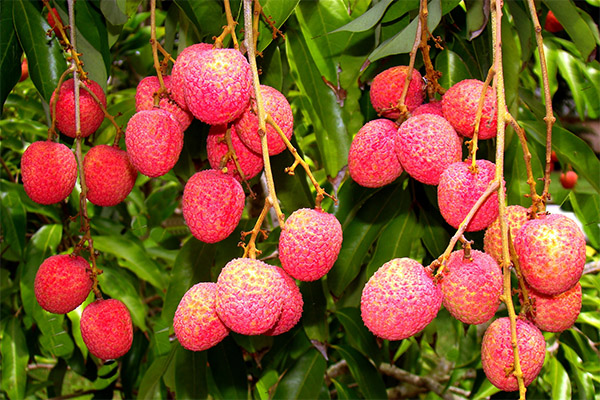
- The Chinese call lychee "dragon's eye" due to the visual resemblance of the fruit to the skin of magical creatures.
- The berries are high in nicotinic acid, which helps improve blood flow.
- The fruit in China symbolizes love and romance.
- Liji is effective for colds and wet coughs.
- Liji is consumed not only as a dessert, as it serves as an excellent addition to salads and second courses.
- The berry is used in making alcoholic beverages.
- Lichee is a perennial plant. In the wild it can live for about 1,000 years.
- Around the first century AD. berries were delivered to the imperial court by a special "courier" service directly from Guangdong Province.
«Important: All information on this site is provided for informational purposes only. The information on this site is for informational purposes only. Please consult a specialist before applying any of the recommendations. Please consult a health care professional before using any of the recommendations. Neither the editors nor the authors shall be liable for any possible harm caused by materials."

